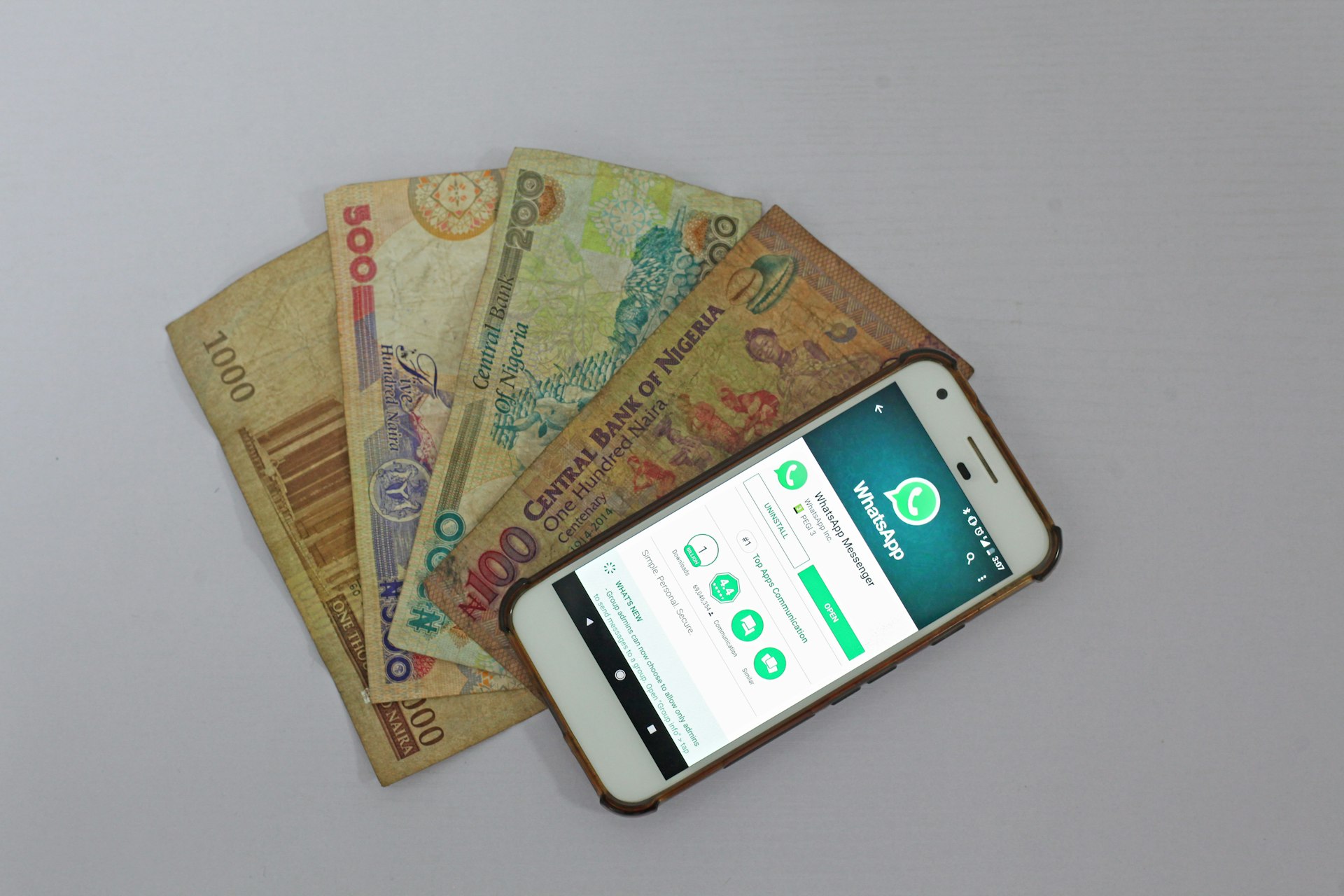Building a Mindful Money Lifestyle: Practical Planning for Financial Well-Being

Photo by Sasun Bughdaryan on Unsplash
Introduction: Why Mindful Money Lifestyle Planning Matters
Adopting a mindful approach to your finances means more than simply tracking spending or setting a budget. It is about making intentional, values-based decisions that support your overall well-being and long-term goals. In an era when four in five Americans report anxiety about money, mindful money lifestyle planning offers a path to clarity, confidence, and peace of mind [4] . This article provides a comprehensive roadmap for integrating mindfulness into your financial planning, ensuring your money supports a life you truly want.
Understanding Mindful Money Lifestyle Planning
Mindful money lifestyle planning involves aligning your financial decisions with your core values and life priorities. Rather than making reactive decisions based on immediate needs or social pressures, mindful planning encourages a proactive, holistic view. This includes setting clear financial goals, regularly reviewing your habits, and adjusting your plans as your circumstances or values evolve [1] [2] .
Key components of mindful financial planning include:

Photo by Nathan Aguirre on Unsplash
- Identifying your financial goals and values
- Creating a realistic and adaptable budget
- Establishing emergency savings
- Planning for long-term needs, such as retirement
- Making informed decisions about debt, investments, and major purchases
- Reviewing and refining your financial strategies regularly
Step 1: Define Your Values and Set Intentional Goals
The foundation of mindful money planning is clarity about what matters most. Start by asking yourself: What brings you the greatest sense of fulfillment? What are your short-term and long-term aspirations? These answers will shape your financial goals and help you prioritize spending and saving [2] [3] .
Practical steps:
- Write down your top three life priorities (e.g., family stability, career growth, travel, early retirement).
- List your financial goals, categorizing them as short-term (within a year), medium-term (1-5 years), and long-term (5+ years).
- Review your goals regularly and adjust as your life changes.
Example: Maria, a young professional, prioritized paying off student debt (short-term), saving for a home (medium-term), and building retirement savings (long-term). By clarifying these goals, she created a plan that balanced immediate needs and future ambitions.
Step 2: Create a Realistic Budget and Track Your Habits
A mindful budget is a tool for awareness, not restriction. It helps you see where your money goes and ensures spending aligns with your values. Begin by tracking every expense for a month-either manually, in a spreadsheet, or with a budgeting app. Then, categorize your spending and compare it to your priorities.
Actionable guidance:
- Track all income and expenses for at least 30 days.
- Identify patterns: Are you spending on things that matter to you, or on impulse purchases?
- Set spending limits for nonessential categories and redirect savings toward your goals.
Potential challenges include difficulty in tracking cash expenses or staying motivated. To overcome these, set reminders, use digital tools, and celebrate small wins.
Alternative approach: If a traditional budget feels overwhelming, try the “pay yourself first” method-automatically transfer a set amount to savings each payday, then spend the remainder as needed.
Step 3: Build an Emergency Fund and Plan for Uncertainty
Unexpected events-job loss, medical expenses, urgent repairs-can derail even the best plans. An emergency fund acts as a financial cushion, reducing stress and helping you avoid debt in tough times [3] .
How to get started:
- Set a target of at least three to six months’ living expenses.
- Open a dedicated savings account separate from your main spending account.
- Automate monthly transfers, even if small.
Example: After building a $5,000 emergency fund over two years, Alex was able to cover an unexpected car repair without relying on credit cards.
If you struggle to save, review your budget for areas to cut or consider increasing your income through side gigs or freelance work.
Step 4: Invest for the Future and Plan for Retirement
Mindful investing means making choices that support your long-term security and align with your risk tolerance and values. This can include retirement accounts (like 401(k)s or IRAs), diversified mutual funds, or socially responsible investments.
Step-by-step guidance:
- Review your employer’s retirement plan options and consider contributing at least enough to get any available match.
- Open an individual retirement account (IRA) if eligible. Compare traditional and Roth options based on your tax situation.
- Research low-cost index funds or target-date funds for long-term growth.
- Revisit your investment strategy annually and adjust as your goals or risk tolerance change.
Potential challenges include lack of investment knowledge or fear of market volatility. To address this, consider consulting a certified financial planner or using reputable financial education resources. For those seeking guidance, you can search for “fee-only financial planner” in your area or access educational modules and workshops from organizations such as Mindful Money [5] .
Step 5: Practice Ongoing Mindfulness and Regular Reviews
Financial mindfulness is an ongoing process. Regular reviews help ensure your money continues to reflect your values and support the life you want. Schedule check-ins-quarterly or annually-to revisit your goals, track your progress, and make necessary adjustments [1] .
During each review, ask:
- Are my spending and saving habits still aligned with my values?
- Have my goals or circumstances changed?
- What adjustments do I need to make?
Example: After a job change, Sam reassessed his financial goals, increased his emergency savings target, and adjusted his investment contributions to reflect his new income.
If you find it difficult to stay motivated, join a financial accountability group or consider working with a financial coach. Mindful Money offers group coaching and educational resources to support ongoing mindful financial habits [5] .
Accessing Mindful Money Lifestyle Planning Resources
There are multiple pathways to deepen your practice of mindful money planning:
- Self-directed learning: Explore free and paid online courses, podcasts, and books. For example, Mindful Money provides educational modules and workshops that cover values-based planning, goal setting, and investing [5] .
- Personalized guidance: Search for a certified financial planner (CFP) in your area. Look for professionals who emphasize holistic and values-based planning.
- Group support: Join a local or online community focused on financial wellness and accountability. This can provide motivation, new ideas, and a sense of shared progress.
To find reputable financial education programs, use search terms like “financial literacy nonprofit US,” “fee-only financial advisor near me,” or “mindful money coaching.” For government-backed resources, visit the Consumer Financial Protection Bureau (CFPB) website or search for “financial education CFPB.” If seeking retirement planning guidance, consider searching for “retirement planning resources” on the official AARP website or the U.S. Department of Labor’s Retirement Toolkit.
Key Takeaways and Next Steps
Mindful money lifestyle planning is not a one-time project but an ongoing journey. By aligning your financial decisions with your deepest values and practicing regular, intentional reviews, you can reduce stress, achieve meaningful goals, and create a more secure future. Whether you begin with a simple budget, start an emergency fund, or seek community support, every mindful step brings you closer to financial well-being.
References
- [1] Boldin (2024). Money Mindfulness: 10 Ways to Reduce Stress and Achieve Your Financial Goals.
- [2] Mindful Money (2024). The Essentials of Financial Planning: A Comprehensive vs Modular Approach.
- [3] Bajaj AMC (2024). Mindfulness and Money: Achieving Financial Goals with a Holistic Approach.
- [4] The Freedom Adventure (2024). Mindful Money Management: Essential Reads for Freedom and Wealth.
- [5] Mindful Money (2024). Personal Finance with a Happiness Dividend.
MORE FROM moneysaversearch.com













